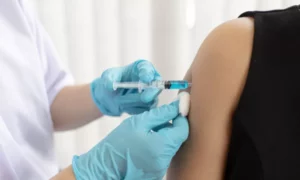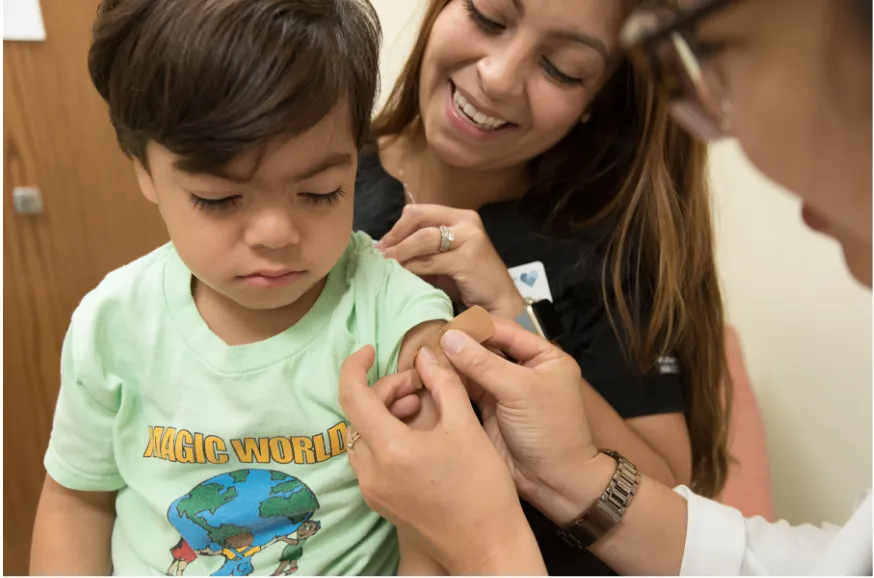Anti-Vaccine Advocates Outpace Public Health Action
August 21, 2024

Concerns about a possible outbreak of the avian influenza virus H5N1, or bird flu, continue among scientists and public health authorities, even though the risk of human-to-human transmission remains low and only four cases of human infection from animal exposure were reported as of this writing in early July. Nevertheless, federal authorities have already developed candidate vaccines for the bird flu that are expected to offer good protection against serious illness if an outbreak does occur.
No one knows yet whether a vaccine against the H5N1 avian flu virus will actually be needed, yet there is already a significant campaign against it from anti-vaccination circles. According to a June 12 Kaiser Family Foundation’s (KFF) HealthCare Infodemiology Brief, conspiracy theories about a potential bird flu vaccine are flourishing online. Vaccine opponents are fear mongering about these vaccines, attempting to worry the public that they will be dangerous. At the same time, these voices falsely claim that the H5N1 virus is a hoax, drummed up by politicians who are interested in imposing vaccine mandates.
Should Public Health Authorities Speak Up?
The anti-vaccination advocates are using debunked theories about Covid-19 to deny the reality of the H5N1 outbreak in animals that is a real threat to humans and to cast aspersions on any vaccines that are ultimately developed to thwart its impact. Should public health officials be out in front of these false conspiracy theories? It may be hard for scientists to imagine getting involved disputing false claims about vaccines that aren’t even fully developed yet and may never be necessary. As the KFF brief notes, “The use of COVID-19 to fearmonger about bird flu (and vice versa) is a preview of what to expect in response to future pandemics.” Thus, a case can easily be made that indeed public health officials should work hard to refute false claims about H5N1 and potential vaccines against it right now because doing so could help prevent vaccine skepticism, vaccine hesitancy, and vaccine refusal in the future.
An Inadvertent Source of Vaccine Misinformation
Anti-vaccine sentiments are fueled by many sources. Usually, these come from a handful of well-known misinformation spreaders who spin every new piece of information about vaccines to concoct scientific sounding but totally inaccurate claims. Sometimes, however, anti-vaccine sentiments are fueled by sources that have no intention of spreading misinformation. Take for example the story in the New York Times last May titled “Thousands Believe Covid Vaccines Harmed Them. Is Anyone Listening?” While the story does acknowledge that serious adverse side effects from Covid-19 are rare in a couple of places, it spends most of its lengthy space detailing anecdotes from people who believe they were harmed by the vaccines. The story was immediately picked up by anti-vaccine advocates, who used it to spread the rumor that thousands of people have been injured by Covid-19 vaccines.
It is clear that the New York Times reporter, Apoorva Mandavilli, was not attempting to be the source of an internet flurry of anti-vaccine posts. Nevertheless, the sheer length of the story, in which heartbreaking accounts of people suffering from a variety of debilitating physical problems, gives the impression that these problems are widespread and common. A proper balance would have been to spend most of the time writing about how the Covid-19 vaccines have proven incredibly safe, with serious adverse side effects occurring in extremely rare instances. It is not even clear that Covid-19 vaccines are responsible for the problems the people in the story are reporting, but again the impression one gets from the article is that Covid-19 adverse events are more common than they really are and that they are being ignored. The New York Times writer seems unaware of one of the basic tenets of news reporting: that a small number of emotional appeals will always carry more weight with readers than tons of data. Over 250 million U.S. Americans have safely received Covid-19 vaccines. Highlighting emotionally charged stories about a handful of people who may have Covid-19 vaccine-related injuries is clearly irresponsible.
What are scientists and public health officials doing to refute irresponsible reporting like this? There isn’t a coordinated approach. Comments lambasting the New York Times vaccine injury story appeared on X (formerly Twitter) alongside anti-vaccine posts, but an organized campaign to set the record straight is clearly lacking.
We need an organized effort to deal with anti-vaccine conspirators that proactively debunks myths about topics like bird flu before they infect the public’s minds and drive people away from taking necessary safety measures. As KFF notes, ignoring the misinformation about the H5N1 virus is missing an opportunity to tackle a problem that has far-reaching significance. According to reports, former President Donald Trump has promised that if reelected he will strip funding from schools that have immunization mandates. It may seem unimaginable that the United States could someday be a country in which school children are not required to be vaccinated against preventable diseases like measles and polio, but that is exactly what some anti-vaccination advocates want to see. We are facing a serious public health challenge: immunization is one of the cornerstones of modern disease prevention and it saves lives. Allowing anti-vaccination voices to have any unrefuted space is dangerous. We must act aggressively against them at the earliest possible moment.
Related Posts

How to Improve the Public's Health
Posted in Public health
What will it take to focus in on the things that really move the needle in public health?

We Should Celebrate the Advances Vaccine Research Is Making: But Many Aren't
Posted in Health Communication
There are so many reasons to celebrate vaccines lately. So why are so many not partaking?

Mosquitoes Are Winning, But There May Be Solutions
Posted in GMOs
Mosquitoes are the most deadly animal out there. What are some new ways that we're trying to eliminate this threat?